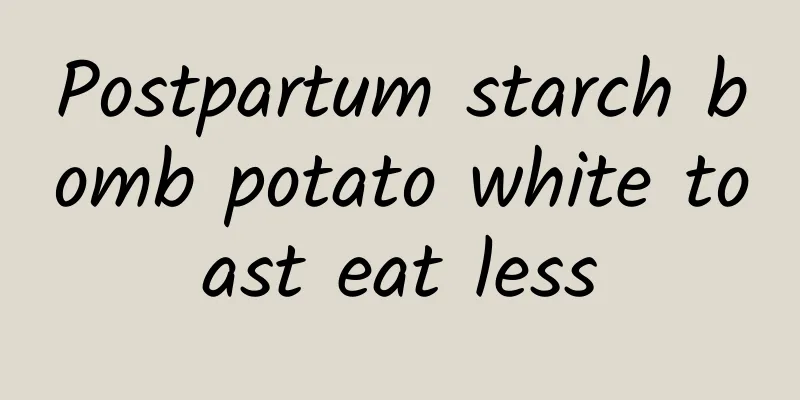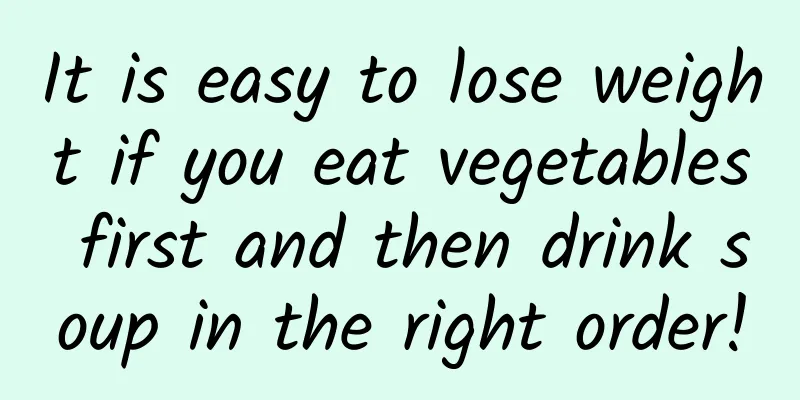Postpartum starch bomb potato white toast eat less

|
The purpose of postpartum confinement for women is to get enough rest to restore their physical strength and to enable smooth lactation. They often follow the traditional method of confinement, often eating sesame oil chicken, stir-fried sesame oil eucommia kidney, and peanut pork trotter soup every day. They unknowingly exceed the calorie limit, but as a result, their bodies are still plump after the confinement period. How should we pay attention to calorie intake during confinement so as not to gain weight due to excess calories? Higher GI foods include: potatoes, white toast, white rice, mochi, French bread, rice cakes, and cakes. (Photography by Luo Huiwen) During the confinement period, the diet of breastfeeding mothers is not only related to their own health, but also affects the secretion and nutrition of breast milk. On the one hand, they must provide sufficient milk for the baby, and on the other hand, they cannot eat too much to avoid excessive calorie accumulation and fattening themselves. Starchy foods easily turn into fat It is easy for postpartum women to consume too much starch, and mistakenly believe that they need to eat a lot at every meal. In fact, this is not the case. Nutritionist Zhao Hanying said that most starchy foods will quickly increase blood sugar, thereby stimulating insulin secretion and prompting sugar to be converted into fat storage. It is recommended to choose foods with a low glycemic index (also known as low GI foods) and foods with high fiber content. Eating them will make it less likely for blood sugar to rise, and can also help with weight control. GI (Glycemic Index) is the "glycemic index" in nutrition. Different starchy foods cause different blood sugar rise reactions in the body. Foods with too high a GI value will accelerate the rise of blood sugar, promote the secretion of insulin and the formation of fat. On the other hand, excessive fluctuations in insulin can easily lead to hunger, making you want to eat a big meal. The more easily a food causes blood sugar to rise quickly, the higher its GI value is. Foods like sugars and starches are considered "high GI". Conversely, foods that cause blood sugar to rise more slowly have a lower GI value. Foods like fats and proteins are considered "low GI". Low GI Foods vs. High GI Foods When it comes to starch as the staple food during the confinement period, mothers should first recognize what are low-GI foods and high-GI foods to avoid eating the wrong foods or eating too much, which may lead to postpartum obesity. 1. Lower GI foods: brown rice, oats, sweet potatoes, buckwheat noodles, vermicelli, and pasta. 2. Higher GI foods: potatoes, white toast, white rice, mochi, French bread, rice cakes, and cakes. Choose a low GI diet for weight control: 1. Nutritionist Zhao Hanying recommends that the staple food for the three meals of confinement mothers should mainly consist of low GI foods, including brown rice, oats, sweet potatoes, buckwheat noodles, vermicelli, pasta, etc., which have lower GI values than white rice. 2. Choose products made from whole wheat flour, such as whole wheat bread or whole wheat toast, which have a lower GI value than white flour products. Avoid eating overly processed and refined starches. |
>>: Postpartum fruit bomb: avoid these five high-sugar fruits
Recommend
Symptoms of postmenopausal uterine fibroids Can uterine fibroids cause uterine bleeding
For some female friends, uterine fibroids are mor...
A must-have for weight loss! Eat these 8 foods at night to keep you full and prevent obesity
Dinner is the meal of the day that is most likely...
The prevention methods of vulvar leukoplakia must be clearly understood
Vulvar leukoplakia is a disease that seriously en...
What should pregnant women with cervical precancerous lesions supplement?
What should pregnant women with cervical precance...
At what age do women enter menopause?
With the development of the times, the menopause ...
What are the dangers of vulvar leukoplakia?
Many people think that vulvar leukoplakia is just...
What causes uterine fibroids? What are the symptoms of uterine fibroids?
Uterine fibroids are a common disease in the fema...
Diagnosis of anovulatory dysfunctional uterine bleeding
Anovulatory functional uterine bleeding is a type...
What should you avoid eating when you have dysmenorrhea? Cold foods
Many women experience pain during menstruation. I...
Can drinking coffee help you lose weight? Wrong! It’s a cheating step to achieve good sports results!
I believe that many people always have a cup of c...
Diet therapy for pelvic inflammatory disease
Diet therapy for pelvic inflammatory disease: 1. ...
What are the dietary taboos for adenomyosis?
Adenomyosis has a great impact on health, so when...
Uterine fibroids usually cause abdominal masses
Uterine fibroids usually cause abdominal masses, ...
How long does it take to treat endometrial tuberculosis?
How long does it take to treat endometrial tuberc...
What to eat to nourish your body after medical abortion? Here are 6 foods
After the abortion, you can eat oranges and apple...









